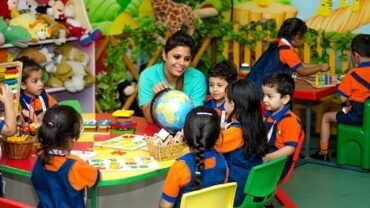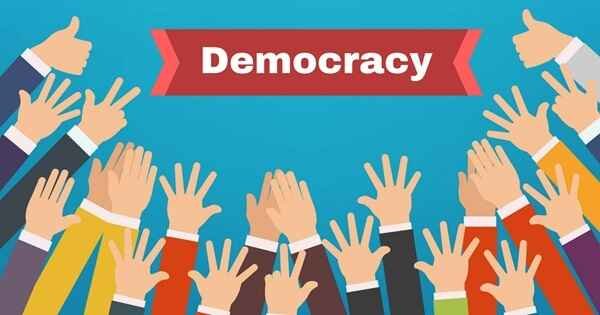India boasts of an education system which is one of the largest in the world with 1.4 million schools, 36000 higher educational institutes and 227 million students. India has made significant progress in improving the literacy rate since independence in 1947. The Indian education system at the primary and secondary level consists of both private schools and government run schools. The private school system in India is a huge sector with 29% of the students enrolled in them. In fact, the shoddy administration and terrible facilities of the government schools force more parents to send their children to private schools. The bad quality of government-run educational institutions is a long festering issue in the country.
This is the list of 20 interesting facts about the education system in India.
1. FDI in Education
The inflow of Foreign Direct Investment in the Indian educational system amounted to US$ 1,256 million in the period between April 2000 and March 2016. In the financial year 2015-16, the Indian education market was worth US$ 100 billion.

2. e-learning market
India’s e-learning market is expected to touch US$ 40 billion this year. India is also the second largest e-learning market in the world after the USA. The distance education sector in India is expected to grow at a Compound Annual Growth Rate of 34 percent by 2018.
3. Poor higher education enrollment
The most alarming fact about the Indian education system is the fact that only one out of nine children join a higher educational course after completing school. This translates to a dismal enrollment ratio of 11% as opposed to the USA with an enrollment ratio of 83%.
4. Size of the higher educational system
The higher educational sector in India is the largest in the world with more than 70 million enrollments. India has also been able to create 40 million more vacancies for the students.
5. Employability of Indian graduates
The sad state of affairs of the higher educational system in India can be gauged by the fact that only one out of ten students holding a degree in Humanities are employable while only one out of four Engineering graduates are capable of employment.
6. Educational boards
Apart from the ICSE and CBSE, the various Indian states have a State Board of Secondary Education except Andhra Pradesh which has more than one board. Union territories such as Daman and Diu, Lakshwadeep, Dadra and Nagar Haveli, Chandigarh and Pudducherry do not have their own board.
7. Grading of Universities
According to NAAC, 90% of the colleges and 70% of the universities in the country are of either average or poor quality. These numbers caused much consternation among the policy planners in New Delhi.
8. State with 100% literacy
Kerala became the first state in India to achieve 100% primary education on January 2016. This became possible due to the literacy program called Athulyam launched by the state government.
9. Greener pastures
It has been estimated that Indian students spend around $7 billion to go and study in the foreign universities. Indian students make up a huge chunk of immigrant students in foreign countries such as the USA. This is also called “Brain Drain”.
10. Digital literacy
Digital literacy has become essential in the modern world. The current digital literacy rate in the country is just 15%. Government of India has launched the Digital India campaign which also aims to improve the digital literacy rate to 50% in the next three years.
11. High cut off marks
The over emphasis on marks and liberal marking system of some educational boards has seen the cut off percentages for admissions into some reputed colleges touch insanely high numbers. This deprives many average students of a good college education.
12. Absent teachers
Government funded schools are suffering from the chronic problem of shortfall of teachers. In many villages and small towns across the country, a single teacher is forced to run an entire school. Corruption has also enabled many teachers to remain absent from schools and collect salary for the same with impunity.
13. Lagging in Science and Technology
India accounts for an incredibly small amount of just 3% of all the research papers published in the world in science and engineering. Citations account for an even smaller amount of just 1%. USA, on the other hand, is way ahead of India.
14. Children with learning disabilities
CBSE has attempted to address the issue of children with learning disabilities by passing an order to appoint special educators for such children. This is a part of the Right to Education Act and the philosophy of “inclusive practices” that the board is trying to follow.
15. High grade corruption
The University Grants Commission has granted the status of deemed university to more than 49 private universities within a few years as opposed to just 44 private universities in 50 years. This inevitably leads to charges of corruption against UGC.
16. Digital academic documents
Government of India plans to digitize degrees, diplomas, mark sheets, etc. from secondary to tertiary level institutions into a National Academic Depository as a part of the Digital India Initiative.
17. The best schools
The Doon School in Dehradun, La Martiniere School in Kolkata and the Delhi Public Schools are considered to be the best schools in the country. The Kendriya Vidyalayas run by the Union government are considered to be the best government-run educational institutions in India.
18. Premier Engineering and Medical Institutes
Despite being a laggard in the quality technical education, IITs, Indian Institute of Science and AIIMS have achieved global fame.
19. Distance learning
The National Institute of Open Schooling provides distance education to students at the secondary and higher secondary level. The Indira Gandhi National Open University provides distance education at the higher education level through its 53 regional and 1400 study centers.
20. Rural education
A survey done among children aged 10 in the rural areas found that half of them were unable to read at a basic level, half dropped out of school by the age of 14 and 60% did not know division.
Santosh Kumar is a Professional SEO and Blogger, With the help of this blog he is trying to share top 10 lists, facts, entertainment news from India and all around the world.





